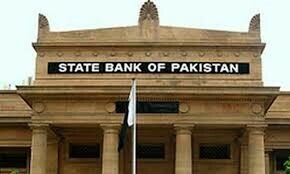INDIA’S Junior Minister for Finance Jayant Sinha was not exaggerating when he tweeted last week: “History is written today as Rajya Sabha passes Bankruptcy Bill!”
In a parliament that is boisterous and where many lawmakers are experts at stonewalling the legislative agenda, it was nothing short of a miracle for the government to have got both houses to pass the Insolvency and Bankruptcy Code 2016, which replaces or amends nearly a dozen laws including such archaic ones as the Presidency Towns Insolvency Act, 1909, and the Provincial Insolvency Act, 1920.
The speed with which the bill was piloted, steered through a parliamentary committee, discussed threadbare and then passed unanimously by both houses — the Lok Sabha and the Rajya Sabha — is indeed remarkable, especially considering the bitterness between the two leading parties, the ruling Bharatiya Janata Party (BJP) and the Congress that has stalled several important legislative matters including passing of the crucial Goods and Services Tax (GST) bill.
The bankruptcy code bill was introduced in the lower house of parliament last December and was referred to a joint committee. The panel suggested changes and a modified code was readied by the government by the end of April. Last week, both the houses passed the bill, without any rancour, reflecting a degree of maturity unseen in recent times.
By ensuring that the bill becomes law, the government and the opposition have ensured that India’s ranking in the World Bank’s ease of doing business index — currently 136th amongst 189 countries — will move up significantly. The absence of an insolvency law has dragged India’s ranking way down in the list.
By carrying out the much-needed reform before May 31, parliament has ensured that the country’s ranking in the ease of doing business index — the World Bank takes into consideration all reforms measures undertaken before the May 31 cut-off — would improve substantially.
The move had bipartisan support with Anand Sharma of the Congress — a stern critic of the Narendra Modi government — admitting this was a good beginning. “We have taken a progressive view,” he said. “We have always been in favour of whatever is progressive. It is important that it brings about structural changes and broad-based consensus. We must bring about a bipartisan consensus.”
Economists and experts have also hailed the passing of the Insolvency and Bankruptcy Code, described as a watershed reform that will structurally strengthen the identification and resolution of insolvencies in the country.
Says Pawan Agrawal, chief analytical officer, CRISIL Ratings: “We believe the code will instill far greater financial discipline among borrowers. It can also potentially kindle investor interest in lower-rated (below AA category) corporate bonds, which will help in deepening the market. But implementation of the code is critical and the build-out of the ecosystem will take time.”
Besides improving India’s ease of doing business ranking, the move will enhance creditor rights over the long term, boosting investor confidence and facilitate deepening of India’s corporate bond markets. Lenders and asset reconstruction companies will be the immediate beneficiaries, he adds.
INTERESTINGLY, the bill was passed by the upper house of parliament just days after the Rajya Sabha had accepted the resignation of liquor tycoon and lawmaker Vijay Mallya. The ethics committee of the upper house had recommended that Mallya be expelled for not having repaid loans worth Rs90bn to banks, but the Rajya Sabha chairman accepted his resignation.
Had the law been in force, Mallya — currently in the UK, which has refused to deport him to India — perhaps would not have been able to escape the country, leaving behind bad loans. The matter would possibly have resolved much earlier, with Mallya repaying the loans, or having been declared bankrupt, his assets being acquired by the lenders.
The new law is applicable to companies, partnerships, limited liability partnerships, individuals and any other body specified by the central government.
The act envisages the setting up of a regulator, the Insolvency and Bankruptcy Board of India, which will regulate the functioning of insolvency professionals (IPs), insolvency professional agencies (IPAs) and information utilities (IUs).
The National Company Law Tribunal (NCLT) will adjudicate insolvency resolution for companies, while the Debt Recovery Tribunal (DRT) will adjudicate insolvency resolution for individuals.
The new act enhances the right of a creditor to identify insolvency and initiate resolution proceedings through the new ecosystem. It attempts to simplify legal processes, preserve value for creditors and provide them with greater certainty of outcome.
Recovering bad loans from defaulters — especially corporate borrowers — has always been a tough challenge for lenders including state-owned banks. According to the Reserve Bank of India (RBI), stressed assets add up to nearly 15pc of bank loans — or nearly Rs10tr.
Multiplicity of laws has in a way resulted in the legal system being clogged by cases. The debt recovery tribunals, Lok Adalats and special courts set up under the Sarfaesi Act (Securitisation and Reconstruction of Financial Assets and Enforcement of Security Interest) have been inundated with complaints and have managed to clear less than a fifth of these over the past few years.
Under the new act, the resolution process will be taken up by licenced IPs, who will be members of IPAs. IUs will collect and disseminate financial information to facilitate insolvency resolution.
Offences under the act will attract imprisonment of up to five years or a fine of up to Rs10m or both. The new law also specifies a timeframe for resolving insolvencies. It has to be resolved within 180 days after registering a bankruptcy application, plus there is a 90-day extension.
Typically, winding up a sick company takes about four years in India, twice as long as in China and Russia, according to the World Bank. The average recovery is also around 25pc, which is among the lowest in the emerging world. Hopefully, the new act should improve things on the bankruptcy front in India over the coming months.
Published in Dawn, Business & Finance weekly, May 16th, 2016















































